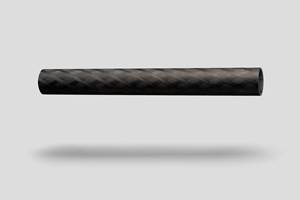In praise of technical service reps
Tech service representatives: without them, molding trials fail and manufacturing issues go unresolved.
In the 1979 classic movie Apocalypse Now, Robert Duvall’s character, Colonel Bill Kilgore, exclaims, “I love the smell of napalm in the morning!” In the composites industry, the aromas of styrene, phenolic, methacrylate, molten thermoplastics and other chemicals or polymers are indicators of manufacturing activity. Not everyone appreciates such odors, but owners and general managers of most molding shops will say, “It smells like money.” I’ve heard the same is said on many a livestock farm, so that’s probably where the axiom originated. But that’s a topic for a different industry magazine!
Sure enough, it’s the commercial activity that makes the composites world turn, with lots of limelight shining on industry CEOs, inventors and high-flying sales and marketing personnel. But in this month’s column, I want to highlight the role played by technical service personnel. They fly well below the publicity radar, yet without them, incorrect material selections are often made, prototype molding trials fail and manufacturing issues go unresolved.
I spent many years in sales and marketing roles in the composites industry, and my technical support people quickly became my best friends. As an engineer, I often knew how to solve the problem at hand, but putting a tech service rep in front of a customer added much greater validity to the outcome.
I was reminded of this value over the past couple of months as the Institute for Advanced Composites Manufacturing Innovation (IACMI, Knoxville, TN, US) was developing a prototype wind turbine blade with several new resins and techniques, to use as a demonstration of some advanced ideas. As a participant in the molding trials, I got to observe, up close, the leverage of previous expertise in doing something different. At Strongwell (Bristol, VA, US), we were pultruding spar caps using a blend of commercial carbon fiber with a novel, low-cost textile PAN carbon fiber produced by Oak Ridge National Laboratory (Knoxville, TN, US). Not only was this the first time anyone had pultruded this new fiber, which has a wide band format, but we also were doing it with a tough polyurethane resin system instead of conventional epoxy. Without the onsite technical support from Huntsman Polyurethanes (The Woodlands, TX, US) and Strongwell, I’m fairly certain we could not have been successful. After clearing a few initial hurdles, the team manufactured the targeted 100m of spar cap for incorporation into the blade.
A month later, a different team of industrial members came together to manufacture the full prototype blade at the National Wind Technology Center near Denver, CO, US. The skins and shear web were produced via vacuum infusion of a novel reactive thermoplastic resin based on methyl methacrylate, called Elium, provided by Arkema Inc. (King of Prussia, PA, US). Although we had done some sub-element and subscale trials to better understand the parameters, we were faced with infusing this material through a thick, monolithic root section, then over and under a combination of balsa, foam and the previously pultruded carbon fiber spar caps, surrounded by a thin layer of specially developed glass fabric from Johns Manville (Denver, CO) — to a length of 9m. With dedicated onsite technical support from Arkema, SikaAxson US (Madison Heights, MI, US) and Composites One (Arlington Heights, IL, US), we got the layup, bagging and infusion parameters correct, producing a good shear web and both skins on the first trials, without having to remanufacture any of the components. This saved a lot time and enabled us to meet a very aggressive schedule.
One thing that impressed me was how well these industrial partners collaborated and came to agreement about how to process the materials, despite their different experiences, or perhaps, because of these experiences. The planning for the molding trials was as important as the actual molding. The skill set of the best technical service people not only includes a deep understanding of materials and processes, but excellent interpersonal and communications skills, especially in front of customers. They also must be road warriors, much like salespeople (but without the pressure of meeting sales forecasts).
While much travel is regional, in an increasingly global composites world, there can also be travel, for weeks, even months at a time, to remote corners of the world where there are no local support offices, the language and customs are different and family is far away. But the key is getting the materials, process or equipment to work, to keep the revenues flowing. These experiences sure make for interesting stories around the dinner table after a long day on the shop floor! I say we should give some added appreciation for the dedication these professionals provide. Without them, progress in this industry would be much slower.
Related Content
Composite profiles bring consistent quality to Ant-X drones
Italian drone solutions provider enlists Exel Composites to deliver pultruded and pull-wound profiles that support prototype drone structure designs.
Read MoreBiocomposite for mobile architecture, low load-bearing applications
The German Institutes of Textile and Fiber Research and partners have developed a biocomposite well suited for support profiles and connecting nodes in construction applications.
Read MorePull-wound carbon fiber poles enable lightweight, compact, rigid emergency stretcher
Based on military feedback, Epsilon Composite developed an optimized, foldable stretcher that combines telescopic pull-wound carbon fiber tubes.
Read MorePulFlex introduces pultruded Flex Connect
Fiberglass T-slot, primarily used for automation, framing and other quick setup systems, competes with aluminum alternatives.
Read MoreRead Next
VIDEO: High-volume processing for fiberglass components
Cannon Ergos, a company specializing in high-ton presses and equipment for composites fabrication and plastics processing, displayed automotive and industrial components at CAMX 2024.
Read MorePlant tour: Daher Shap’in TechCenter and composites production plant, Saint-Aignan-de-Grandlieu, France
Co-located R&D and production advance OOA thermosets, thermoplastics, welding, recycling and digital technologies for faster processing and certification of lighter, more sustainable composites.
Read More“Structured air” TPS safeguards composite structures
Powered by an 85% air/15% pure polyimide aerogel, Blueshift’s novel material system protects structures during transient thermal events from -200°C to beyond 2400°C for rockets, battery boxes and more.
Read More










.jpg;maxWidth=300;quality=90)










